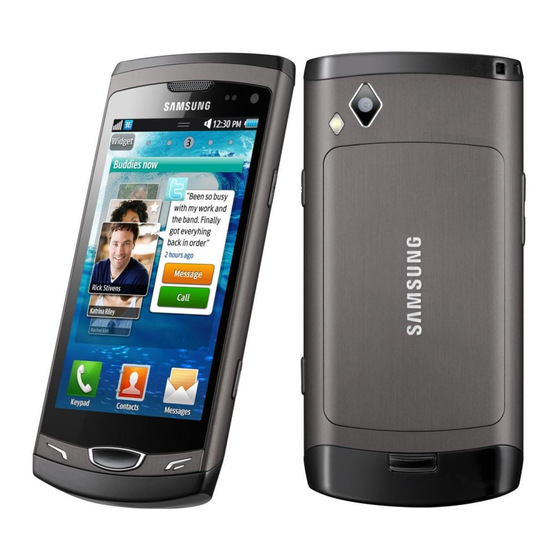Samsung WAVE II GT-S8530 User Manual - Page 9
Browse online or download pdf User Manual for Cell Phone Samsung WAVE II GT-S8530. Samsung WAVE II GT-S8530 31 pages.

"Support needed research into possible biological effects of RF of
the type emitted by wireless phones;
"Design wireless phones in a way that minimizes any RF exposure
to the user that is not necessary for device function; and
"Cooperate in providing users of wireless phones with the best
possible information on possible effects of wireless phone use on
human health.
FDA belongs to an interagency working group of the federal agencies that
have responsibility for different aspects of RF safety to ensure coordinated
efforts at the federal level. The following agencies belong to this working
group:
"National Institute for Occupational Safety and Health
"Environmental Protection Agency
"Federal Communications Commission
"Occupational Safety and Health Administration
"National Telecommunications and Information Administration
The National Institutes of Health participates in some interagency working
group activities, as well.
FDA shares regulatory responsibilities for wireless phones with the Federal
Communications Commission (FCC). All phones that are sold in the United
States must comply with FCC safety guidelines that limit RF exposure.
FCC relies on FDA and other health agencies for safety questions about
wireless phones.
FCC also regulates the base stations that the wireless phone networks
rely upon. While these base stations operate at higher power than do the
wireless phones themselves, the RF exposures that people get from these
base stations are typically thousands of times lower than those they can
get from wireless phones. Base stations are thus not the primary subject
of the safety questions discussed in this document.
What are the results of the research done already?
The research done thus far has produced conflicting results, and many
studies have suffered from flaws in their research methods. Animal
experiments investigating the effects of radio frequency energy (RF)
exposures characteristic of wireless phones have yielded conflicting
results that often cannot be repeated in other laboratories. A few animal
studies, however, have suggested that low levels of RF could accelerate
the development of cancer in laboratory animals. However, many of the
studies that showed increased tumor development used animals that had
been genetically engineered or treated with cancer-causing chemicals so
as to be pre-disposed to develop cancer in absence of RF exposure. Other
studies exposed the animals to RF for up to 22 hours per day. These
conditions are not similar to the conditions under which people use
wireless phones, so we don't know with certainty what the results of such
studies mean for human health.
Three large epidemiology studies have been published since December
